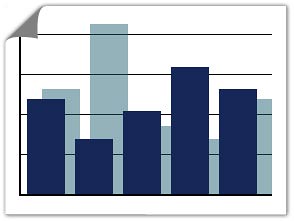
While the operator of the struck train in the June 22 crash has in no way been blamed, it's certainly disquieting to know that someone with their record was cruising around the Metro system with the lives of thousands in their hands.
From the full NTSB report, which was released last week:
WMATA records indicated that the operator of the struck train (214) was hired initially as a bus driver on February 17, 2000. On October 26, 2001, he was reclassified as a train operator, the position he occupied at the time of the accident.As Robert Sumwalt of the NTSB said, "When crews start deviating from the standard operating procedures, they are about three times more likely to commit another error that has consequential results."
Efficiency test records showed that the operator of train 214 had received three reprimands and two suspensions since 2003. The first two reprimands occurred in February 2003, one for causing a 6-minute delay and the other for failing to report a station overrun. He had received his third reprimand 1 month before the accident, on May 22, 2009, for failing to take his key before securing a car. He had been suspended in 2004 for passing a red signal on the main track and in 2006 for making an improper coupling that caused equipment damage.
This operator also was removed from service on three occasions in August 2008 for manually stopping his 6-car train at the 8-car marker (the end of the platform) at passenger stations. The operator said he had changed from automatic to manual mode when entering the stations because he did not want to rely on the automated system to properly position the train along the platform.
On the day of the accident, WMATA required that all revenue trains be operated in automatic mode during the morning and evening rush periods. Metrorail Safety Rules and Procedures Handbook (MSRPH) Rule 3.20 states that “Mode 1 [automatic train operation] shall be used when carrying revenue passengers except as authorized by OCC or as specified in the current General Order.” No modifications to MSRPH Rule 3.20 were in effect at the time of the accident. After the accident, WMATA directed that all trains were to be operated in manual mode for an indefinite period until the integrity and reliability of the ATC system could be assured. Further, all trains would be required to pull forward to the 8-car marker when making station stops.
The operator had been sent for reinstruction on manual door opening as well as for retraining on coupling and uncoupling procedures; main line operations utilizing stopping profiles; and troubleshooting and procedures on doors, brakes, circuit breakers, and location. He also was retrained on train recovery procedures and blocking/clamping operation procedures. WMATA managers stated that action was taken because the operator was not maintaining his train’s schedule while operating in manual mode and as a consequence was delaying trains.
Contrary to instructions to return to automatic mode, the operator continued to operate his train manually. He stated that he was permitted to take this action under MSRPH Rule 3.1, which states the following:
Passenger safety is the responsibility of every WMATA employee; however, the Train Operators have the ultimate and final responsibility for the safety of the passengers on their particular trains.
Why can't WMATA get rid of potentially dangerous, repeat offenders like this?
Plus, it's not like the training and investment in operators is that much. The operator who died on June 22 finished up her operator training in just two short months, according to the report.
Troubled by this? Well, rest assured. ATU 689 is on the case. Check out their latest video:
Other items:
Metro says they're beefing up security for back to school (WTOP)









 Oct. 11, 2012
Oct. 11, 2012 February 21, 2012
February 21, 2012 March 4, 2010
March 4, 2010




